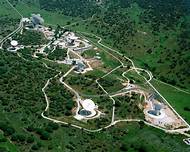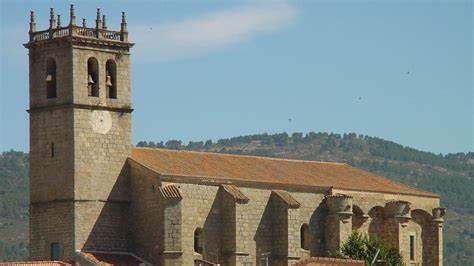Unveiling the Enigmatic Origins of The Madrid Deep Space Communications Complex (MDSCC) and Its Relationship to Robledo de Chavela in Spain
- Franco Arteseros
- Feb 3
- 4 min read
The Madrid Deep Space Communications Complex (MDSCC) is a remarkable symbol of human curiosity and our drive to understand the universe. Nestled in the Sierra de Guadarrama mountains near Robledo de Chavela, Spain, this facility plays an essential role in maintaining communication with spacecraft far beyond our planet. Through this post, we will explore the origins, history, significance of the MDSCC, and its unique connection to Robledo de Chavela.

Origins of MDSCC
The MDSCC was founded in the 1960s amid NASA's growing commitment to space exploration. In 1964, the Spanish government signed an agreement allowing NASA to establish a tracking station in Spain. This strategic move aimed to enhance the coverage of deep space missions, complementing existing facilities in the United States and Australia.

The choice of location was crucial. Robledo de Chavela's high altitude (about 1,200 meters above sea level) and minimal electromagnetic interference made it ideal for deep space communications. For example, this low interference allows for clearer and more reliable signals, vital for missions that involve precise navigation, such as the Mars rover missions.

Historical Context
In 1965, the first antenna at MDSCC was installed, marking a significant partnership between Spanish authorities and NASA. The facility’s inaugural mission supported the Lunar Orbiter and provided crucial tracking for Apollo missions, including the historic Apollo 11 mission in 1969, which landed the first humans on the moon.

Since then, MDSCC has expanded its capabilities significantly. It now hosts several antennas, with its largest measuring 70 meters in diameter, essential for communicating with missions like the Mars Rovers and Voyager probes. Over the years, it has worked tirelessly to adapt its systems to keep pace with advancements in space technology.

The Location and Its Characteristics
The Madrid Deep Space Communications Complex is strategically located just 40 kilometers from Madrid in the scenic Sierra de Guadarrama. This remote setting is vital: the facility experiences minimal urban interference, which leads to clearer signals. Studies indicate that antennas in lower-interference areas can improve signal reception by up to 20%.

In addition to the geographical advantages, the region benefits from deep blue skies and low atmospheric distortion. This means less interference from weather conditions, which can drastically affect signal quality during critical communications.

Relationship with Robledo de Chavela
Robledo de Chavela, a quaint town of around 1,500 residents, has developed a special bond with the MDSCC since its inception. The complex has positively impacted the local economy by creating job opportunities and boosting tourism. The influx of visitors to this space landmark has increased local business revenues.

The relationship goes beyond economics; educational initiatives have emerged, fostering a spirit of discovery among local students. MDSCC offers tours to schools, educating the community on space technology and its significance. For instance, recent programs have seen over 500 local students engage with staff to learn about satellite systems and deep-space tracking.

Impact on Space Exploration
Over the decades, MDSCC has been pivotal in expanding our understanding of space. It has tracked numerous historic space missions, from Mars missions like Curiosity and Perseverance to international collaborations with agencies such as the European Space Agency (ESA). On average, these missions generate thousands of signals daily, underscoring MDSCC's role as a backbone of communication in space exploration.

Statistics Highlight:
MDSCC has been operational for nearly six decades and has supported over 150 space missions.
It has tracked around 40% of all NASA's deep space missions, evidencing its significance on a global scale.

Infographic illustrating the ARTESEROSTEK Deep Space Network with information on planetary positions, satellite trajectories, and mission data spanning the solar system.
Future of MDSCC
As technology continues to advance, MDSCC is set for further enhancements. Investments in cutting-edge technologies aim to improve data transmission and signal reception, positioning the facility to meet future demands.

Upcoming projects include the development of advanced antennas and automation systems. With NASA and other agencies planning missions to Mars and beyond, MDSCC will take on an even larger role in humanity's journey into the cosmos. Expectations are high for what these missions will reveal about our universe.

Final Thoughts
The Madrid Deep Space Communications Complex is more than just a facility in the mountains near Robledo de Chavela. It epitomizes human innovation and curiosity. From its origins in the early days of space exploration to its current status as a vital communication hub, MDSCC stands as a symbol of our shared dreams and aspirations.

Its connection with Robledo de Chavela highlights not only the importance of this facility to space exploration but also its positive impact on local communities. As we look to the stars, the MDSCC represents a collective effort to understand the universe, embodying the spirit of international cooperation and technological advancement in our quest for knowledge.






































As a retired engineer from the Madrid Deep Space Communications Complex (MDSCC) in Robledo de Chavela, I look back with immense pride and gratitude for the incredible journey we've shared. This remarkable facility has been a beacon of innovation, collaboration, and exploration, playing a pivotal role in humanity's quest to understand the cosmos.
Over the years, MDSCC has been at the forefront of countless historic missions, from the Apollo moon landings to the Mars rover explorations. The dedication and expertise of our team, combined with the cutting-edge technology at our disposal, have enabled us to maintain vital communication with spacecraft traversing the depths of space.
The strategic location of Robledo de Chavela, with its pristine environment and minimal electromagnetic interference,…